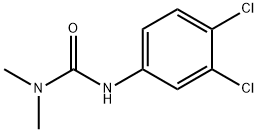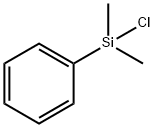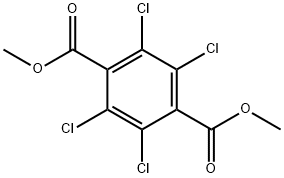Diuron
Synonym(s):3-(3,4-Dichlorophenyl)-1,1-dimethylurea
- CAS NO.:330-54-1
- Empirical Formula: C9H10Cl2N2O
- Molecular Weight: 233.09
- MDL number: MFCD00018136
- EINECS: 206-354-4
- SAFETY DATA SHEET (SDS)
- Update Date: 2025-02-14 11:11:56

What is Diuron?
Description
Diuron (330-54-1) is used as an herbicide for weed control on noncrop lands and agricultural crops such as asparagus, pineapple, cotton, and sugarcane. It is also used as a sterilant in soil, a mildewcide in paints and stains, and an algicide in fish production.
Chemical properties
White, odorless crystalline solid
The Uses of Diuron
Diuron is a urea compound used as a preemergence herbicide in soils to control germinating broad-leaved grasses and weeds in crops such as apples, cotton, grapes, pears, pineapple and alfalfa; sugar cane ?owering depressant.
The Uses of Diuron
A phenyl urea herbicide. Pre-emergent herbicide.
What are the applications of Application
Diuron is an herbicide that inhibits photosynthesis
Definition
ChEBI: Diuron is a member of the class of 3-(3,4-substituted-phenyl)-1,1-dimethylureas that is urea in which both of the hydrogens attached to one nitrogen are substituted by methyl groups, and one of the hydrogens attached to the other nitrogen is substituted by a 3,4-dichlorophenyl group. It has a role as a herbicide, a photosystem-II inhibitor, a xenobiotic, an environmental contaminant and a mitochondrial respiratory-chain inhibitor. It is a dichlorobenzene and a 3-(3,4-substituted-phenyl)-1,1-dimethylurea.
General Description
Diuron is a white crystalline solid/wettable powder and used as a herbicide. Diuron is registered for pre- and post-emergent herbicide treatment of both crop and non-crop areas, as a mildewcide and preservative in paints and stains, and as an algaecide. Diuron is a substituted urea herbicide for the control of a wide variety of annual and perennial broad-leaved and grassy weeds on both crop and non-crop sites.
Thus, the application of diuron is wide for vegetation control and weed control in citrus orchards and alfalfa fields. The mechanism of herbicidal action is the inhibition of photosynthesis. Diuron was first registered in 1967. Products containing diuron are intended for both occupational and residential uses. Occupational uses include agricultural food and non-food crops; ornamental trees, flowers, and shrubs; paints and coatings; ornamental fish ponds and catfish production; and rights-of-way and industrial sites. Residential uses include ponds, aquariums, and paints.
Air & Water Reactions
Very slightly soluble in water.
Reactivity Profile
Diuron is incompatible with the following: Strong acids .
Health Hazard
INHALATION: May cause irritation of nose and throat. EYES: Irritation. SKIN: Moderately irritating to skin.
Health Hazard
Acute and chronic toxicity was found to be oflow order in experimental animals, administered by oral route; repeated doses producedanemia in rats; the LD50 data, however,reported in the literature significantly differ; moderately toxic by intraperitoneal route,while the inhalation risk is low because oflow vapor pressure. Susceptible to hydrolyzeto dichloroaniline in vivo, which can causemethemoglobinemia; no evidence of carcino-genicity in an 18-month study in mice at1400 ppm (Innes et al, 1969); no adverseeffect observed in rats in 2-year feeding studies at dietary concentration level of 250 ppm(ACGIH 1986); adverse reproductive effectsmay arise from chronic exposure to high con-centration level.
LD50 oral (rat): 1017 mg/kg (Lewis 1995)
LD50 oral (rat): 3400 mg/kg (Hodge et al1968)
LD LO intraperitoneal (mouse): 500 mg/kg.
Agricultural Uses
Herbicide: Diuron is a substituted urea herbicide used to control a wide variety of annual and perennial broadleaf and grassy weeds, as well as mosses. It is used on non-crop areas and many agricultural crops such as fruit, cotton, sugar cane, alfalfa, and wheat. Diuron works by inhibiting photosynthesis. It may be found in formulations as wettable powders and suspension concentrates.
Trade name
330541®; AF 101®; AI3-61438®; AMETRON SC®; BOUNDRY®[C]; CHEMIURON®[C]; CEKIURON®; CRISURON®; DAILON®; DIATER®; DI-ON®; DIREX®; DITOX®; DIUMATE® Diuron; DIUREX®,[C]; DIUROL® Diuron; DIURON 4L®; DMU®; DREXEL DIURON 4L®; DROPP ULTRA®; DURAN®; DYNEX®[C] FARMCO DIURON®; FORTEX SC®; FREEFLO®; GINSTAR®; HERBURON 500 BR®; HW 920®; KARMEX®[C]; K-4®; KARMEX DIURON HERBICIDE®; KARMEX DW®; KROVAR IDF®[C]; MARMER®; STRIKER®; SUP'R FLO®; TELVAR®; TIGREX®; TREVISSIMO®; UNIDRON®; UROX D®[C]; VONDURON®
Safety Profile
oneal routes. Questionable carcinogen with experimental tumorigenic and teratogenic data. Mutation data reported. When heated to decomposition it emits highly toxic fumes of Cland NOx. See also CHLOROPHENOLS.
Potential Exposure
High-performance liquid chromatography may be used after extraction with methylene chloride. Measurement is made using an ultraviolet detector.Fish Tox 5 40.39243000 pbb (INTERMEDIATE).Moderately toxic to fish; highly toxic to aquaticinvertebrates
First aid
If this chemical gets into the eyes, remove anycontact lenses at once and irrigate immediately for at least15 min, occasionally lifting upper and lower lids. Seek medical attention immediately. If this chemical contacts theskin, remove contaminated clothing and wash immediatelywith soap and water. Seek medical attention immediately. Ifthis chemical has been inhaled, remove from exposure,begin rescue breathing (using universal precautions, including resuscitation mask) if breathing has stopped and CPR ifheart action has stopped. Transfer promptly to a medicalfacility. When this chemical has been swallowed, get medical attention. Give large quantities of water and inducevomiting. Do not make an unconscious person vomit.Note to physician: Treat for methemoglobinemia.Spectrophotometry may be required for precise determination of levels of methemoglobinemia in urine.
Environmental Fate
Biological. Degradation of radiolabeled diuron (20 ppm) was not observed after 2 weeks of culturing with Fusarium and two unidentified microorganisms. After 80 days, only 3.5% of the applied amount evolved as 14CO2 (Lopez and Kirkwood, 1974). In 8 weeks, <20% of diuron in soil (60 ppm) was detoxified (Corbin and Upchurch, 1967). 3,4-Dichloroaniline was reported as a minor degradation product of diuron in water (Drinking Water Health Advisory, 1989) and soils (Duke et al., 1991).
Under aerobic conditions, mixed cultures isolated from pond water and sediment degraded diuron (10 μg/mL) to CPDU, 3,4-dichloroaniline, 3-(3,4-dichlorophenyl)-1methylurea, carbon dioxide and a monodemethylated product. The extent of biodegradation varied with time, glycerol concentration and microbial population. The degradation halflife was <70 days at 30°C (Ellis and Camper, 1982).
Thom and Agg (1975) reported that diuron is amenable to biological treatment with acclimation.
Soil. Several degradation pathways were reported. The major products and reaction pathways include formation of 1-methyl-3-(3,4-dichlorophenol) ur
Incubation of diuron in soils releases carbon dioxide (Madhun and Freed, 1987). The rate of carbon dioxide formation nearly tripled when the soil temperature was increased from 25 to 35°C. Reported half-lives in an Adkins loamy sand are 705, 414 and 225 d
The half-lives for diuron in field soils ranged from 133 to 212 days with an average half-life of 328 days (Hill et al., 1955). Hill et al. (1955) studied the degradation of diuron using a Cecil loamy sand (1 ppm) and Brookstone silty clay loam (5 ppm) in the laboratory maintained at 27°C and 60% relative humidity. In both soils, diuron was applied on four separate occasions over 22 weeks. In both instances, the investigators observed 40% of the applied amount degraded in both soils.
In a field application study, diuron did not leach below 5 cm in depth despite repeated applications or water addition (Majka and Lavy, 1977).
Groundwater. According to the U.S. EPA (1986) diuron has a high potential to leach to groundwater.
Shipping
Phenyl urea pesticides, solid, toxic, n.o.s. requirea “POISONOUS/TOXIC MATERIALS” label. They fall inHazard Class 6.1 and Packing Group III.
Purification Methods
Recrystallise it from 95% EtOH [Beck et al. J Am Chem Soc 108 4018 1986]. [Beilstein 12 IV 1263.]
Toxicity evaluation
Diuron is a selective inhibitor of the Hill reaction in plant photosynthesis. In some mammalian carcinogenic studies, repeated high-dose exposure to diuron appeared to work as a tumor promoter, and diuron may elicit tumor formation by inducing cytotoxicity with subsequent sustained cell proliferation.
Properties of Diuron
| Melting point: | 158-159°C |
| Boiling point: | 180-190°C |
| Density | 1.48 |
| vapor pressure | 2(x 10-7 mmHg) at 30 °C (Hawley, 1981) |
| refractive index | 1.5500 (estimate) |
| Flash point: | 180-190°C |
| storage temp. | 2-8°C |
| solubility | In acetone: 5.3 wt % at 27 °C (Meister, 1988). |
| pka | -1 to -2 (quoted, Bailey and White, 1965) |
| form | neat |
| form | Solid |
| color | White, odorless crystalline solid |
| Water Solubility | Slightly soluble. 0.0042 g/100 mL |
| Merck | 14,3382 |
| BRN | 2215168 |
| Henry's Law Constant | 1.46(x 10-9 atm?m3/mol) at 25 °C (approximate - calculated from water solubility and vapor pressure) |
| Exposure limits | NIOSH REL: TWA 10 mg/m3. |
| Stability: | Stable. Incompatible with strong acids, strong bases, strong oxidizing agents. |
| NIST Chemistry Reference | Urea, 3-(3,4-dichlorophenyl)-1,1-dimethyl-(330-54-1) |
| EPA Substance Registry System | Diuron (330-54-1) |
Safety information for Diuron
| Signal word | Warning |
| Pictogram(s) |
 Exclamation Mark Irritant GHS07  Health Hazard GHS08  Environment GHS09 |
| GHS Hazard Statements |
H302:Acute toxicity,oral H351:Carcinogenicity H373:Specific target organ toxicity, repeated exposure H410:Hazardous to the aquatic environment, long-term hazard |
| Precautionary Statement Codes |
P201:Obtain special instructions before use. P202:Do not handle until all safety precautions have been read and understood. P260:Do not breathe dust/fume/gas/mist/vapours/spray. P273:Avoid release to the environment. P301+P312:IF SWALLOWED: call a POISON CENTER or doctor/physician IF you feel unwell. P308+P313:IF exposed or concerned: Get medical advice/attention. |
Computed Descriptors for Diuron
| InChIKey | XMTQQYYKAHVGBJ-UHFFFAOYSA-N |
New Products
4,4-Difluoropiperidine hydrochloride tert-butyl 9-methoxy-3-azaspiro[5.5]undecane-3-carboxylate Indole Methyl Resin N-Isopropylurea N,N-Dicyclohexylcarbodiimide(DCC) MELDRUMS ACID 5-METHYLISOXAZOLE-4-CARBOXYLIC ACID Magnessium Bis glycinate Zinc ascorbate 1-bromo-2-butyne 2-acetamidophenol 9(10H)-anthracenone Erythrosin B, 4-Piperidinopiperidine 2-((4-morpholinophenylamino) (methylthio) methylene) malononitrile 2,4-dihydroxybenzaldehyde 3-(4-morpholinophenylamino)-5-amino-1H-pyrazole-4-carbonitrile Methyl 2-methylquinoline-6-carboxylate 2,6-dichloro-4-nitropyridine 4-Bromo-2-chlorobenzonitrile 2-(benzylamino)acetic acid hydrochloride 4-(tert-Butoxycarbonylamino)but- 2-ynoic acid 3,4-dihydro-2H-benzo[b][1,4]dioxepine 1-Phenyl-1-cycloprppanecarboxylicacidRelated products of tetrahydrofuran








You may like
-
 Diuron 98% CAS 330-54-1View Details
Diuron 98% CAS 330-54-1View Details
330-54-1 -
 3-(3,4-Dichlorophenyl)-1,1-dimethylurea CAS 330-54-1View Details
3-(3,4-Dichlorophenyl)-1,1-dimethylurea CAS 330-54-1View Details
330-54-1 -
 3-(3,4-Dichlorophenyl)-1,1-dimethylurea CAS 330-54-1View Details
3-(3,4-Dichlorophenyl)-1,1-dimethylurea CAS 330-54-1View Details
330-54-1 -
 Diuron CAS 330-54-1View Details
Diuron CAS 330-54-1View Details
330-54-1 -
 Diuron CAS 330-54-1View Details
Diuron CAS 330-54-1View Details
330-54-1 -
 3-(3,4-DICHLORO-PHENYL)-1,1-DIMETHYL-UREA CAS 330-54-1View Details
3-(3,4-DICHLORO-PHENYL)-1,1-DIMETHYL-UREA CAS 330-54-1View Details
330-54-1 -
 Diuron CAS 330-54-1View Details
Diuron CAS 330-54-1View Details
330-54-1 -
 A6 CASView Details
A6 CASView Details
